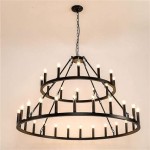Essential Aspects of Farmhouse Architectural Style
Farmhouse architecture is a popular style that evokes a sense of warmth, comfort, and simplicity. Understanding the essential aspects of this style is crucial for creating authentic and cohesive designs. This article will delve into the key elements that define the farmhouse architectural style.
Origins and Evolution
Farmhouse architecture originated in the 18th century in rural areas of Europe and North America. These homes were typically built using locally available materials and reflected the practical needs of farming families. Over time, the style evolved to incorporate elements from various architectural traditions, resulting in a diverse range of farmhouse designs.
Exterior Features
Farmhouse exteriors are characterized by their simplicity and functionality. The use of natural materials like wood, stone, and brick is common. The roofline is typically asymmetrical with gables and dormers. Windows are often large and symmetrical, providing ample natural light and ventilation.
Interior Features
Farmhouse interiors are cozy and inviting. Open floor plans with large living spaces are typical. Fireplaces are a central feature, creating a sense of warmth and gathering. Kitchen designs often incorporate practical elements like large pantries and mudrooms.
Materials and Finishes
Natural materials play a dominant role in farmhouse architecture. Wood is used extensively for structural elements, flooring, and cabinetry. Stone and brick are often employed for fireplaces and exterior accents. Finishes are generally rustic and unadorned, with a focus on durability and functionality.
Regional Variations
Farmhouse architecture has evolved into various regional variations, each with its unique characteristics. For instance, New England farmhouses are known for their clapboard exteriors and symmetrical facades, while Southern farmhouses feature wider porches and larger windows.
Modern Farmhouse
In recent years, the modern farmhouse style has emerged as a popular interpretation of traditional farmhouse architecture. This style blends traditional elements with contemporary design principles. Modern farmhouses incorporate sleek lines, open floor plans, and energy-efficient features while retaining the warmth and functionality of the original style.
Conclusion
The farmhouse architectural style is defined by its simplicity, functionality, and use of natural materials. Exploring the essential aspects discussed in this article provides a foundation for understanding and appreciating this enduring style. Whether it's a traditional farmhouse or a modern interpretation, the farmhouse aesthetic continues to inspire homes that evoke a sense of comfort, warmth, and timeless charm.

Farmhouse Architecture

Some Architectural Features Of A Modern Farmhouse Architecture Design

Key Characteristics Of Modern Farmhouse Homes Connecticut In Style

Key Characteristics Of Modern Farmhouse Homes Connecticut In Style

American Farmhouse Vs Modern What S The Difference

American Farmhouse History House Plans And More

American Farmhouse Vs Modern What S The Difference

Key Features Of The Farmhouse Architectural Style Home

What Is Modern Farmhouse Style
:max_bytes(150000):strip_icc()/southern-living-house-plans-56a4d666bdb144c085b4c3a9dd2b06fb.jpg?strip=all)
Modern Farmhouse Was The Most Popular Home Style Of 2024 5 Inspiring Design Plans








